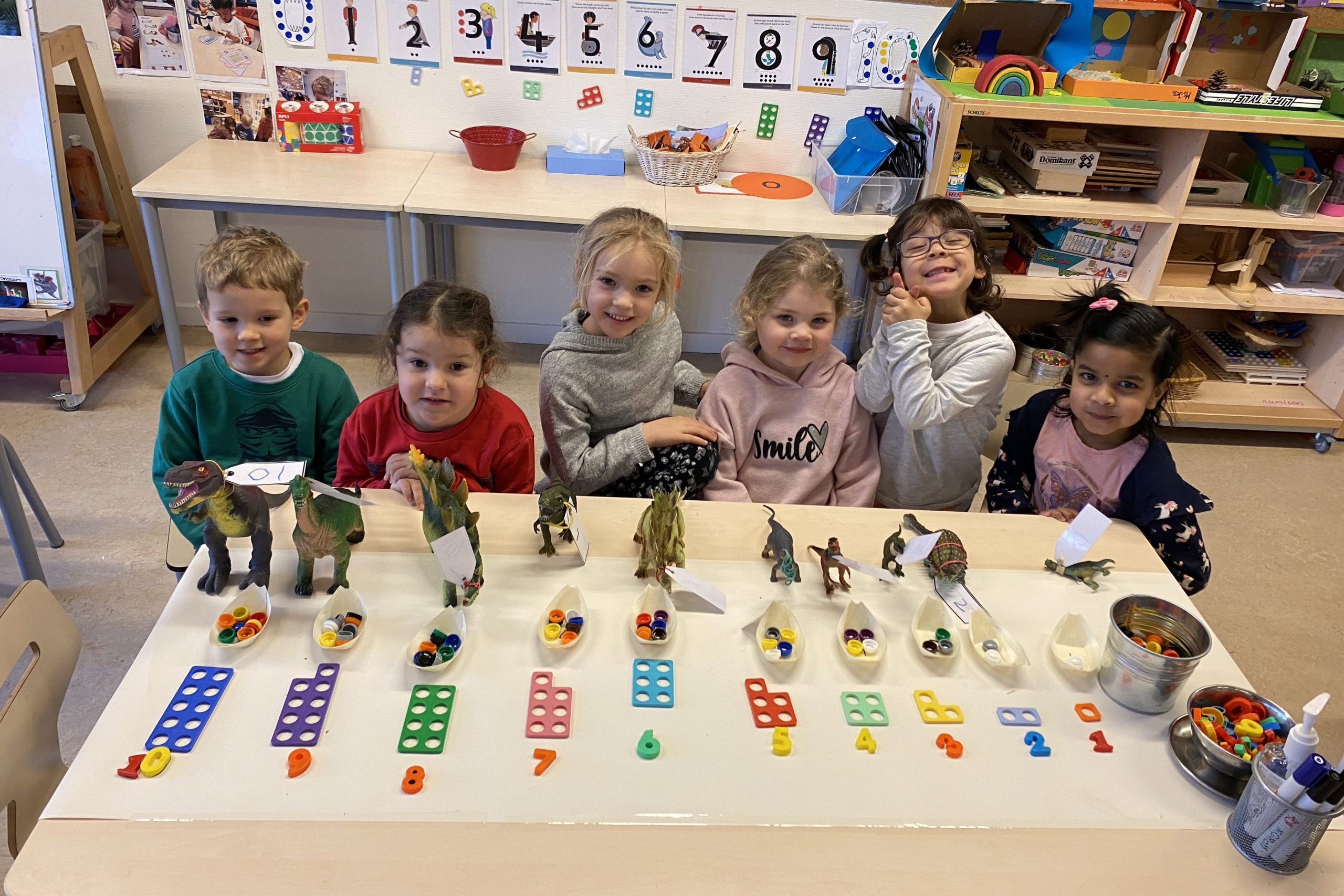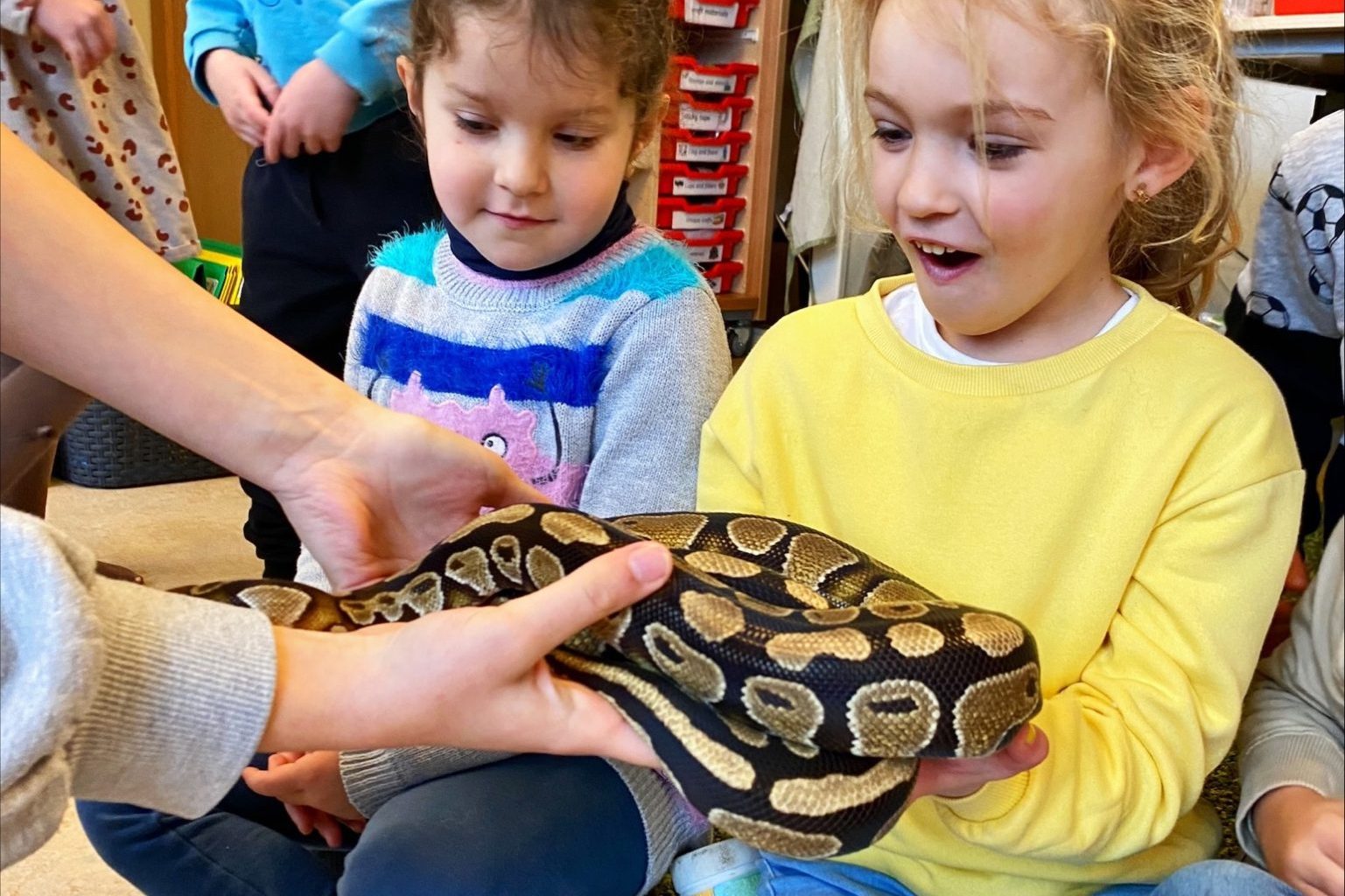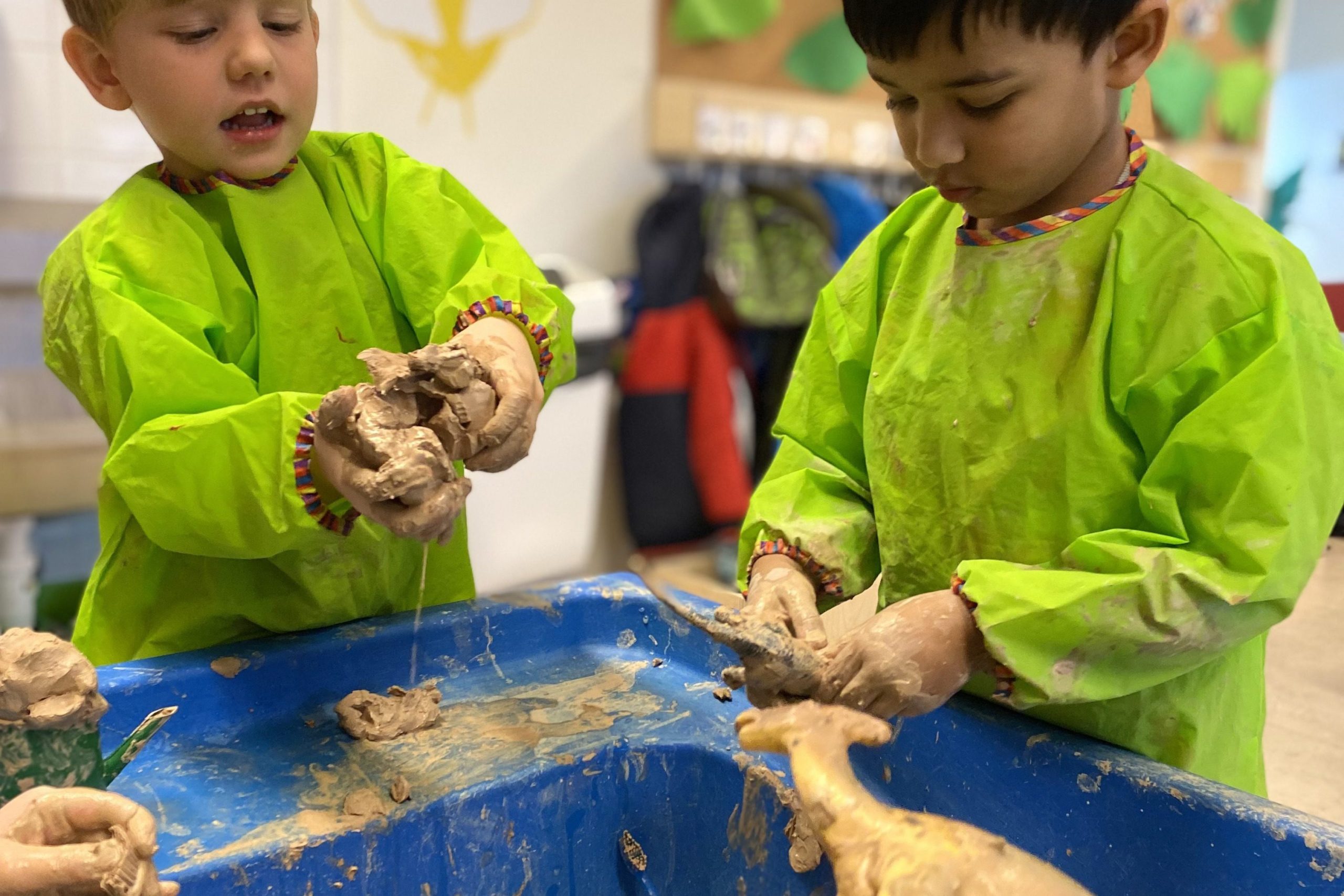
Dinosaur Discoveries and Digging in EYs
Early Years have been immersed in the world of palaeontology, learning more about dinosaurs and how they lived millions of years ago.
By Jessica De Porto, Early Years Teacher and Team Leader
What clues do footprints tell us?
Students in Early Years have been linking many key learning skills to a very popular thematic unit of learning called “Dinosaur Detectives”.
The Atelier space was transformed into a ‘Dino Lab’ run by a team of trained palaeontologist explorer teachers. A large, white egg had appeared in a small nest and mysterious footprints were found on the floor, leading the children to discuss who might have made such large prints. This led to comparisons between the children’s own hand and footprints. What clues do footprints tell us about the size of the owner and what it might eat?
Over the weeks, children have learned more about dinosaurs through their own discoveries and following their own interests. Children learned how palaeontologists used clues from the past to help them piece together information about how dinosaurs may have lived. They learned that clues in the animals we have today are also hugely important in understanding more about dinosaurs. Did you know that birds are in fact the closest living species to dinosaurs? What similarities can you see between birds and dinosaurs?
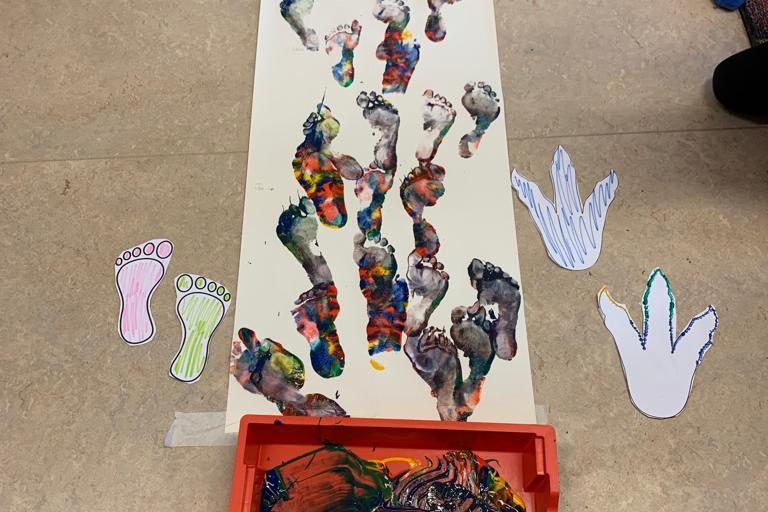
Messy, sensory and social play
Our sensory play areas included making dinosaur fossils using air dry clay, generating imprints from shells and toy dinosaurs. The children also made their own dinosaur eggs using paper mache. Messy, sensory and social play are a great way to discuss the science behind rock formation and natural changes that occur in materials. As part of the Maths foci on measurement, children measured and compared heights of dinosaurs and ordered different dinosaurs into Venn diagrams based on similar or different features. Discriminating between things and looking for patterns are vital Maths skills at this age.
Their written skills were put to good use as our youngest students learned how to express their ideas through mindmaps. Children created mindmap diagrams on different sorts of dinosaurs, focusing on their physical features and diet. Did you know, that scientists believe it is unlikely that dinosaurs actually roared considering they are closely related to birds and reptiles and neither of these species roared.
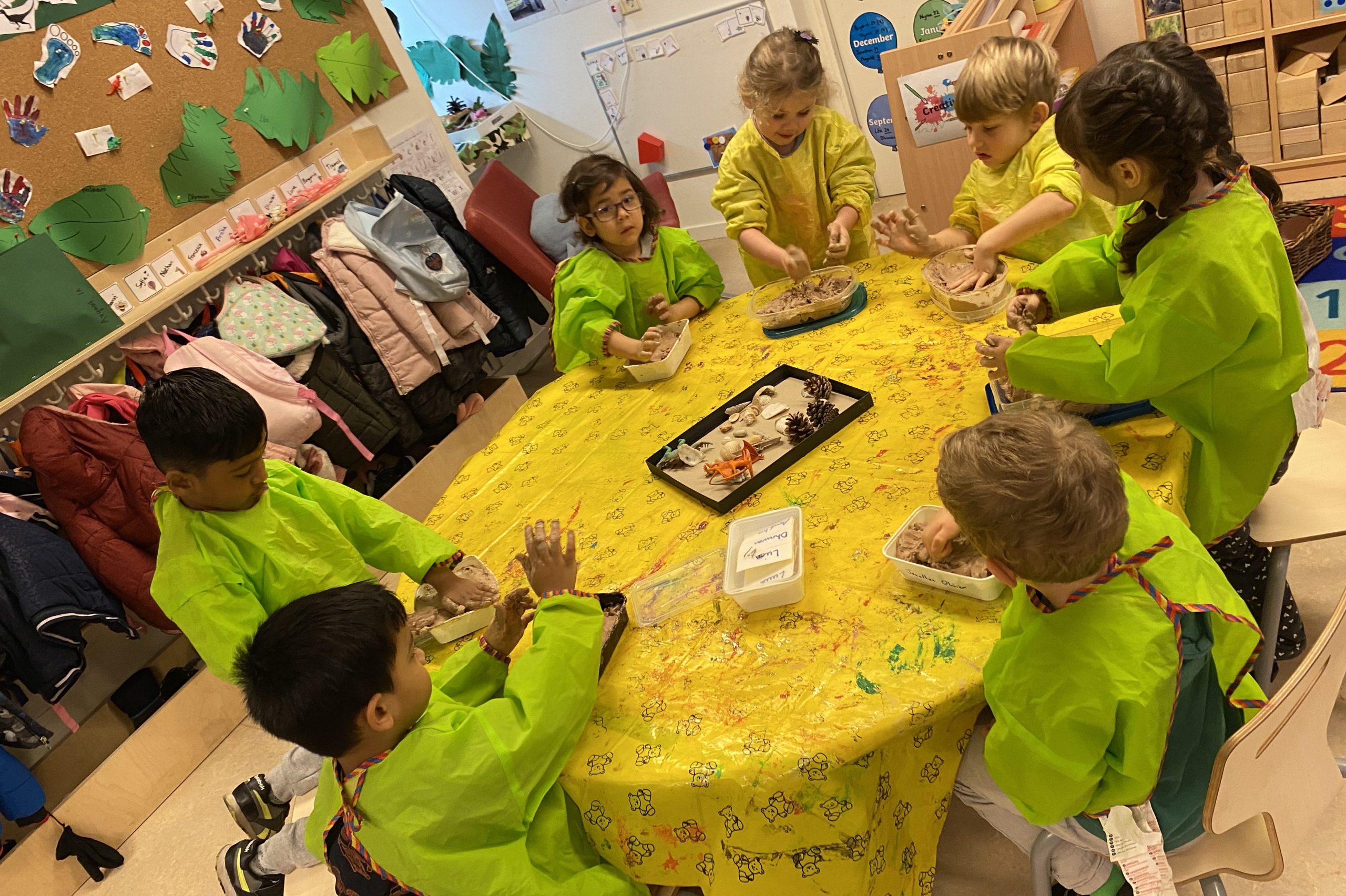
Linking skills to an engaging and facsinating topic = engaged learners!
It is always incredible to see how such young children can become so easily fascinated and engaged in new learning. At OIS in Early Years, our core central focus is on play and social skills. These skills form the momentum behind all our curricular activities and it is clear to see that by linking so many skills to an engaging topic, children have the natural ability to explore and extend their own learning in increasingly more autonomous directions.
We ended this fabulous unit of learning by getting close and personal to some real life reptiles…bringing in snakes, monitors and tortoises to school!!
